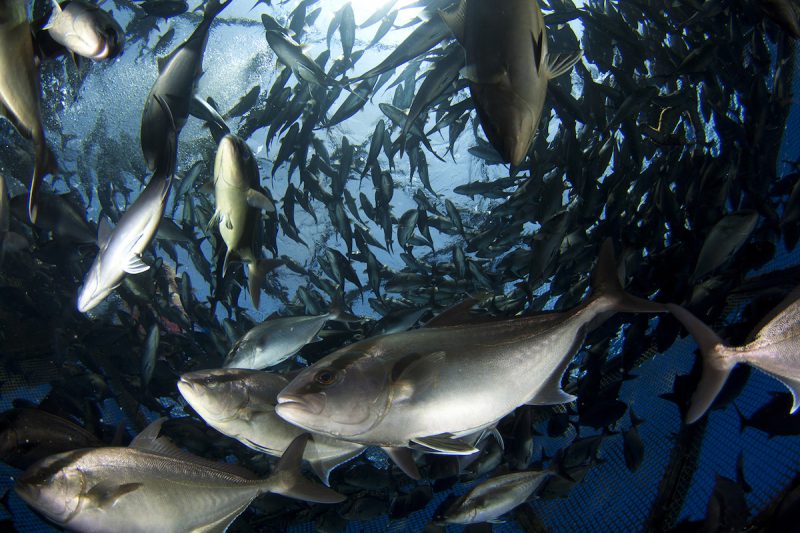US ramping up seafood security with aquaculture
Federal waters off Southern California and in the Gulf of Mexico to host Aquaculture Opportunity Areas
By SeaWestNews
The United States has declared the federal waters off southern California and in the Gulf of Mexico as the first two regions to host Aquaculture Opportunity Areas as it ramps up efforts to secure its seafood security.
Aquaculture Opportunity Areas are defined as geographic areas that have been evaluated for their potential for sustainable commercial aquaculture. Selected areas are expected to support multiple aquaculture farm sites of varying types including finfish, shellfish, seaweed, or some combination of these farm types.
“Naming these areas is a big step forward,” said Chris Oliver, Assistant Administrator for the National Oceanic and Atmospheric Administration (NOAA) Fisheries.
“The creation of Aquaculture Opportunity Areas will foster the U.S. aquaculture industry as a needed complement to our wild capture fisheries. This type of proactive work creates opportunities for aquaculture farmers and maintains our commitment to environmental stewardship,” he said.
The selection of these regions is the first step in a process designed to establish 10 Aquaculture Opportunity Areas nationwide by 2025. These two regions were selected for future aquaculture opportunity area locations based on the already available spatial analysis data and current industry interest in developing sustainable aquaculture operations in the region.
Aquaculture Opportunity Areas are called for in the May 2020 Executive Order on Promoting American Seafood Competitiveness and Economic Growth.
“While NOAA has selected the regions for these first Aquaculture Opportunity Areas, the exact locations will be identified based on best-available science, including data-driven siting analyses using hundreds of data layers of ocean conditions and uses,” said Nicole LeBoeuf, Acting Assistant Administrator for the National Ocean Service.
“Stakeholder input is also essential to ensure the Aquaculture Opportunity Areas are sited in the best locations for aquaculture and to avoid conflicts with other industries or environmental harm.”
There is no predetermined size for an Aquaculture Opportunity Area. Each of the first two areas may accommodate approximately three to five commercial aquaculture operations, but this will vary depending on the specifics of the location.
The size and shape of operations in each area will be determined as part of the Aquaculture Opportunity Area identification process. During this process, NOAA will work with federal and state partners, tribes, and interested stakeholders to determine the appropriate size of each.
“Along with the advanced spatial analysis, public input is vital to this process” said NOAA Office of Aquaculture Director Danielle Blacklock.
“In the coming months and years we plan to conduct outreach, requests for information, and listening sessions to allow our stakeholders to share their insights into the creation of these opportunity areas.”
Seafood farming, if done responsibly—as it is in the United States—is increasingly recognized as one of the most environmentally sustainable ways to produce food and protein. Aquaculture Opportunity Areas and an expanded domestic industry is critical for the economic and environmental resiliency of our coastal communities, and national food security.
The U.S. currently imports at least 85% of its seafood, about half from aquaculture in other countries.
The Government of Canada has also begun work to introduce the country’s first-ever Aquaculture Act, with the aim of bringing more clarity and transparency as to how aquaculture will be managed in order to achieve responsible and sustainable growth.
Canada currently remains the world’s only major farmed seafood producing country without modern national legislation specifically designed to govern a responsible and sustainable industry.
The country’s seafood farming industry generates an estimated $5.16 billion in economic activity and 25,000 full-time jobs for Canadians.
Salmon farmers in British Columbia this week penned an open letter to both the Prime Minister of Canada and the premier of BC to counter calls to shut-down their industry by anti-fish farm activists.
“The science tells us that done responsibly, salmon farming does not negatively impact wild fish populations. Indeed, we play a role in protecting wild salmon by providing a responsibly-raised alternative to eating wild fish,” said John Paul Fraser, executive director of the BC Salmon Farmers Association.
(Picture courtesy of Kampachi Farms which is seeking to secure an offshore fish farming foothold in the Gulf of Mexico)

